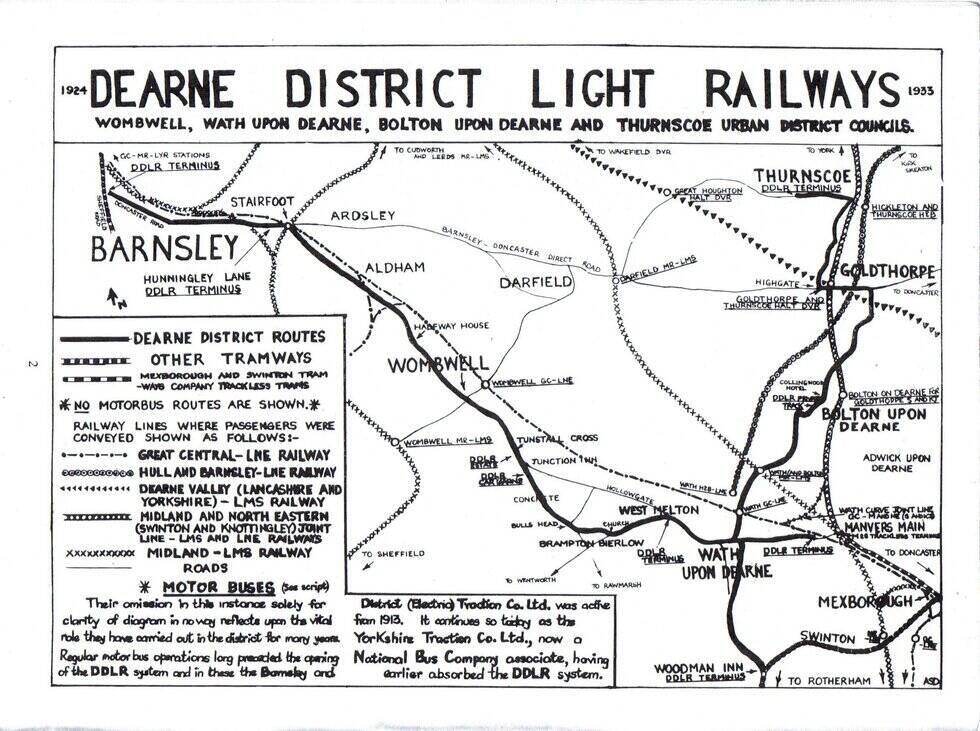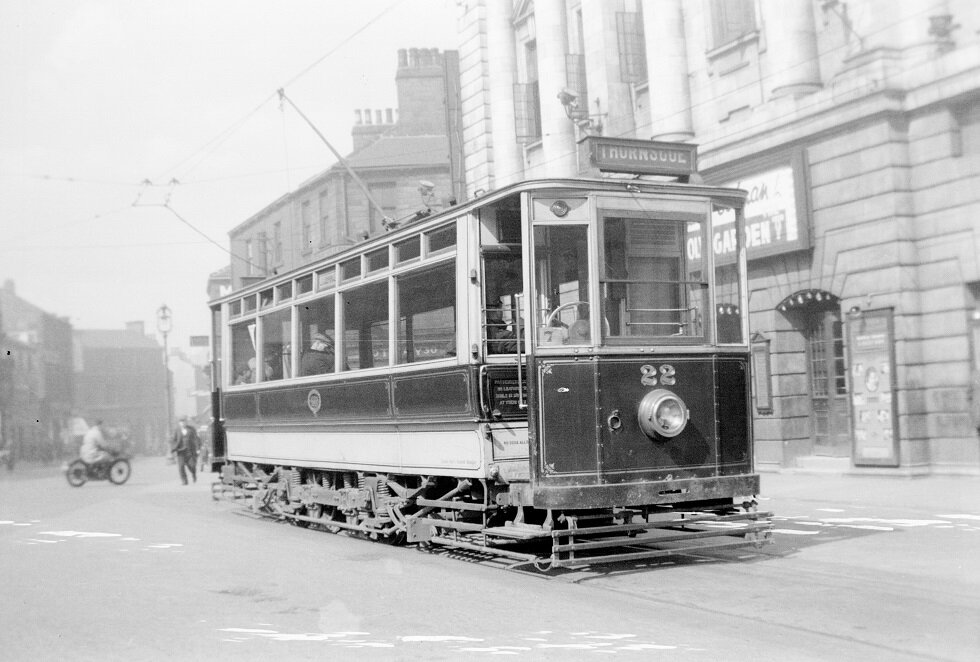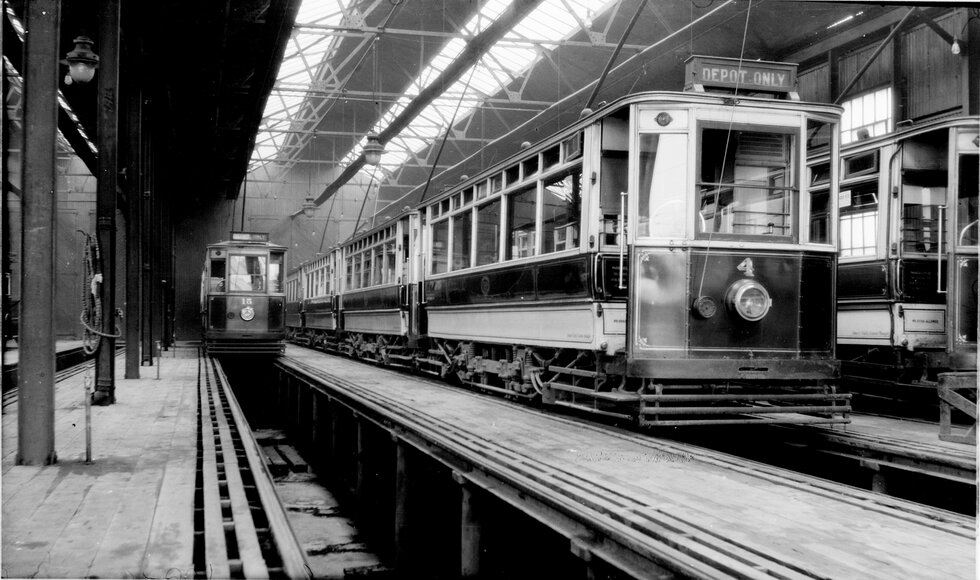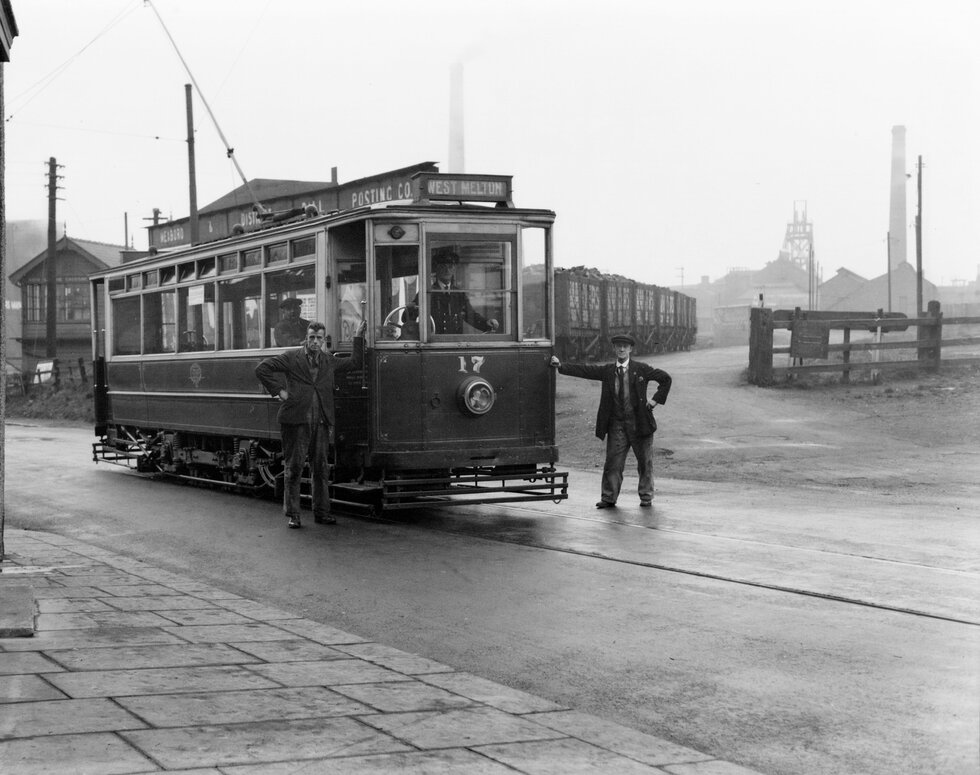14th July 2024 marks 100 years since the opening of the last of Britain’s first-generation tramways to begin operating – the Dearne District Light Railway in South Yorkshire. This system had the briefest duration of any of Britain’s electric tramways, lasting only 9 years. It opened only six months before the closure of the first municipal tramway in the British Isles – Keighley Corporation Tramway.

Undated photograph of Dearne District Light Railway tramcar no. 21 posing under the LMSR bridge at Wath, probably taken shortly after the tramway opened in July 1924 (photo: J H Price/ National Tramway Museum collection).
The South Yorkshire Dearne Valley encompassed several small townships and villages in an area that was known for its extensive coalfields and associated industries. However, it was poorly served by public transport links and lacked decent connections with the nearby towns of Barnsley and Rotherham. Although it was criss-crossed by railway lines, these were mainly built and operated with goods traffic in mind.
Various unsuccessful proposals had been mooted to rectify this but in November 1913 the Urban District Councils of Bolton-on-Dearne, Thurnscoe, Wath-on-Dearne and Wombwell applied for a Light Railway Order to build a tramway linking Barnsley and Thurnscoe, whilst also serving some of the adjacent townships. Approval was eventually granted, in part, in 1915 despite strong opposition from the railway companies, two nearby tramway companies and many of the area’s ratepayers. However, further progress was hindered by the Great War and ensuing post-war inflation.

Map of Dearne District Light Railway
Construction eventually began on 11th May 1923 and resulted in a tramway just over 14 miles in length, most of which was single-track with passing places. This resulted in lengthy delays for tramcars providing the service. Unfortunately, the tramway also lacked a physical connection with that of its Barnsley neighbour, which meant that passengers had to change trams in order to reach the town centre. An added complication was the risk of subsidence from the area’s mining activities, which meant that much of the track had to be laid on wooden sleepers which were paved in tarmacadam.

DDLR 22 at the Alhambra terminus in Barnsley, 8th July 1932 (photograph: H. Nicol)
A thirty-strong fleet of brand-new single deck tramcars was purchased to operate the service. These were housed in a depot at Wombwell, which was rather quirkily known as the ‘Car Barn’ (a term more commonly used in North America). For such a modest route length, the service could probably have been operated with a fleet half this size, even if the forecasted level of demand had been accurate. By this stage, however, the area was reasonably well serviced by a much more flexible motor bus service provided by neighbouring Barnsley and District Traction Co. that was also considerably faster and more convenient despite its higher fares. Consequently, there were fewer passengers than anticipated and only fourteen of the cars were used in normal service.

DDLR 4 in the car barn (depot) at Wombwell (photograph: H Nicol/ National Tramway Museum collection)
In view of these shortcomings, the tramway was doomed almost from the outset and the meagre operating profit generated in the first year of operation was nowhere near enough to meet the capital repayments and rates of interest. Seeking further support from ratepayers, who had mostly opposed the venture from the outset, could only provide temporary relief. A reduction in fares in 1927 in an attempt to boost passenger numbers resulted in a price war with the competing bus operator and a further loss of revenue.
Although the front-entrance design of the tramcars would have facilitated one-person operation, such a cost-saving measure was not resorted to as the area also suffered from high levels of female unemployment, which would not have been helped by making the tramway’s conductresses redundant.
In 1932, the councils admitted defeat and negotiated a deal with the rival bus operator (now renamed as Yorkshire Traction Company) which resulted in the closure of the tramway. This was in return for a payment of £75,000 – around a quarter of what it had cost to build it nine years previously – and a share of the operating profits. The last DDLR red and white tramcar ran on 30th September 1933, and after that services were provided by Yorkshire Traction’s buses.

DDLR 17 at Manvers Main colliery, taken on 28th September 1933, two days before the closure of the tramway (photograph: H Nicol/ National Tramway Museum collection).
As they were only nine years old by this stage, several of the trams were sold to other operators, including five to Falkirk and four to Lytham St Annes. It appears that others may have passed into private ownership, as one was discovered by a passing tramcar enthusiast whilst cycling past a field on the edge of a field not far from Penistone. One was also known to have been used as a shed in the Sheffield area, while two others were used as store sheds at Stairfoot Brickworks.

Unidentified DDLR tramcar body converted into a bungalow not far from Penistone (National Tramway Museum collection).
In addition to photographic archives, the National Tramway Museum also has various publications recounting the history of the Dearne District Light Railway. There are also official documents including the original 1915 Order of the Light Railway Commissioners, which gave the initial go-ahead for the tramway, and an amendment order from the Commissioners dating from 1920.
With thanks to Museum volunteer Jim Dignan for researching and producing this article.
